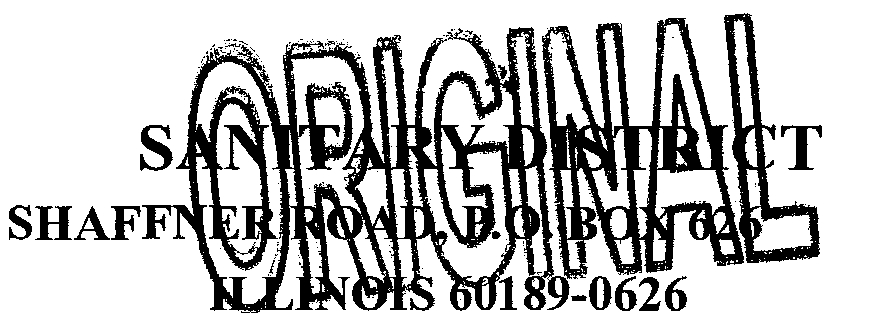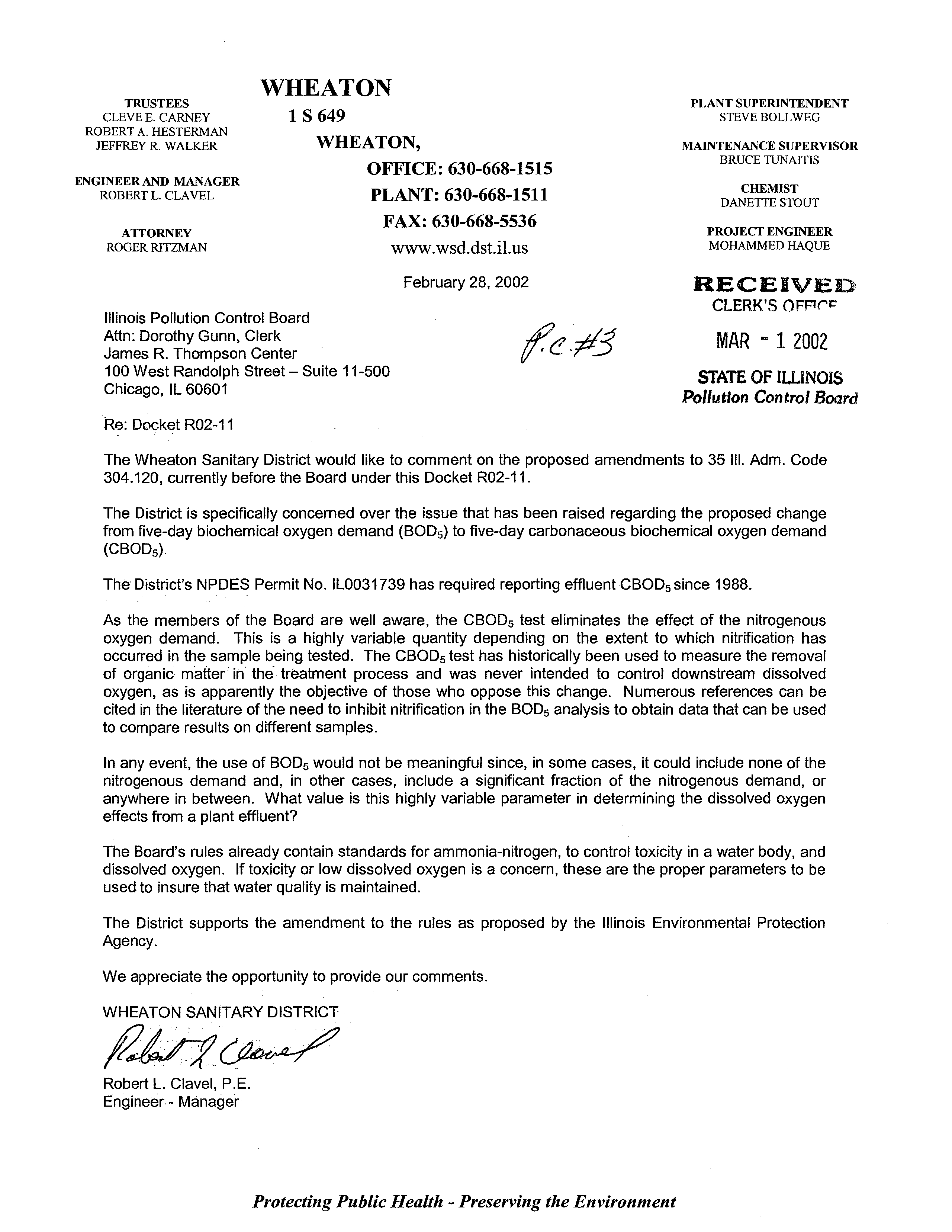TRUSTEES
WHEATON
PLANT SUPERINTENDENT
CLEVE E. CARNEY
1 S 649
STEVE BOLLWEG
ROBERT A. HESTERMAN
JEFFREY R. WALKER
MAINTENANCE SUPERVISOR
BRUCE TUNAITIS
ENGINEER
AND
MANAGER
CHEMIST
ROBERTL. CLAVEL
DANETTE STOUT
ATTORNEY
FAX: 630-668-5536
PROJECT ENGINEER
ROGER RITZMAN
www.wsd.dst.iI.us
MOHAMMED HAQUE
February 28, 2002
RECEIVED
CLERK’S
OFFTC’~
Illinois Pollution Control Board
Attn: Dorothy Gunn, Clerk
MAR
12002
James R. Thompson Center
100 West Randolph Street — Suite 11-500
STATE OF IWNOIS
Chicago, IL 60601
Pollution Control Board
Re: Docket R02-1 I
The Wheaton Sanitary District would like to comment on the proposed amendments to 35 III. Adm. Code
304.120, currently before the Board under this Docket R02-1 1.
The District is specifically concerned over the issue that has been raised regarding the proposed change
from five-day biochemical oxygen demand (BOD5) to five-day carbonaceous biochemical oxygen demand
(CBOD5).
The District’s NPDES Permit No. ILOO3I 739 has required reporting effluent CBOD5 since 1988.
As the members of the Board are well aware, the CBOD5 test eliminates the effect of the nitrogenous
oxygen demand. This is a highly variable quantity depending on the extent to which nitrification has
occurred in the sample being tested. The CBOD5 test has historically been used to measure the removal
of organic matter in the treatment process and was never intended to control downstream dissolved
oxygen, as is apparently the objective of those who oppose this change. Numerous references can be
cited in the literature of the need to inhibit nitrification in the BOD5 analysis to obtain data that can be used
to compare results on different samples.
In any event, the use of BOD5 would not be meaningful since, in some cases, it could include none of the
nitrogenous demand and, in other cases, include a significant fraction of the nitrogenous demand, or
anywhere in between. What value is this highly variable parameter in determining the dissolved oxygen
effects from a plant effluent?
The Board’s rules already contain standards for ammonia-nitrogen, to control toxicity in a water body, and
dissolved oxygen. If toxicity or low dissolved oxygen is a concern, these are the proper parameters to be
used to insure that water quality is maintained.
The District supports the amendment to the rules as proposed by the Illinois Environmental Protection
Agency.
We appreciate the opportunity to provide our comments.
WHEATON SANITARY DISTRICT
Robert L. Clavel, P.E.
Engineer - Manager
WHEATON,
OFFICE: 630-668-1515
PLANT: 630-668-1511
Protecting Public Health
-
Preserving the Environment


